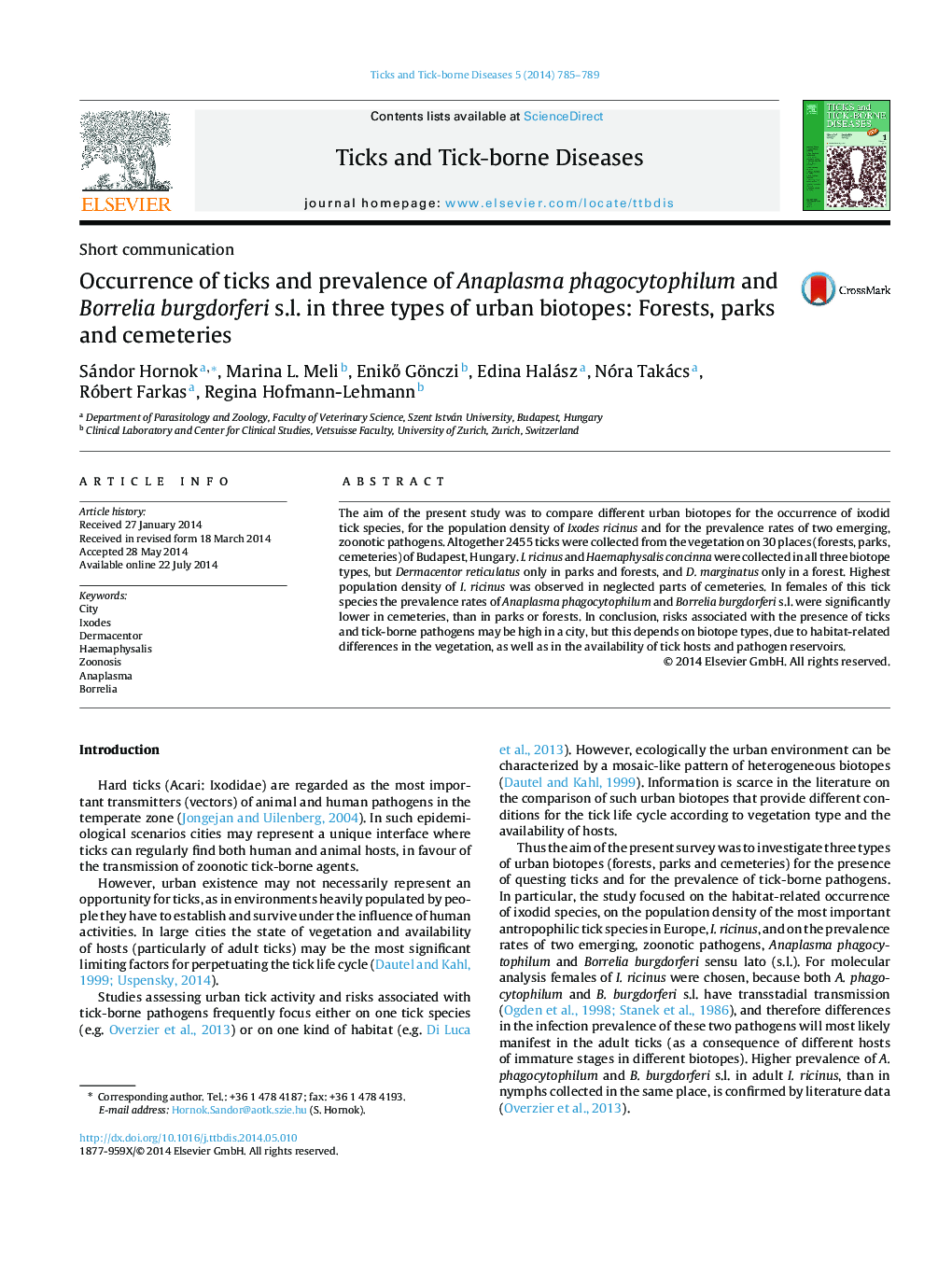| Article ID | Journal | Published Year | Pages | File Type |
|---|---|---|---|---|
| 2473986 | Ticks and Tick-borne Diseases | 2014 | 5 Pages |
The aim of the present study was to compare different urban biotopes for the occurrence of ixodid tick species, for the population density of Ixodes ricinus and for the prevalence rates of two emerging, zoonotic pathogens. Altogether 2455 ticks were collected from the vegetation on 30 places (forests, parks, cemeteries) of Budapest, Hungary. I. ricinus and Haemaphysalis concinna were collected in all three biotope types, but Dermacentor reticulatus only in parks and forests, and D. marginatus only in a forest. Highest population density of I. ricinus was observed in neglected parts of cemeteries. In females of this tick species the prevalence rates of Anaplasma phagocytophilum and Borrelia burgdorferi s.l. were significantly lower in cemeteries, than in parks or forests. In conclusion, risks associated with the presence of ticks and tick-borne pathogens may be high in a city, but this depends on biotope types, due to habitat-related differences in the vegetation, as well as in the availability of tick hosts and pathogen reservoirs.
